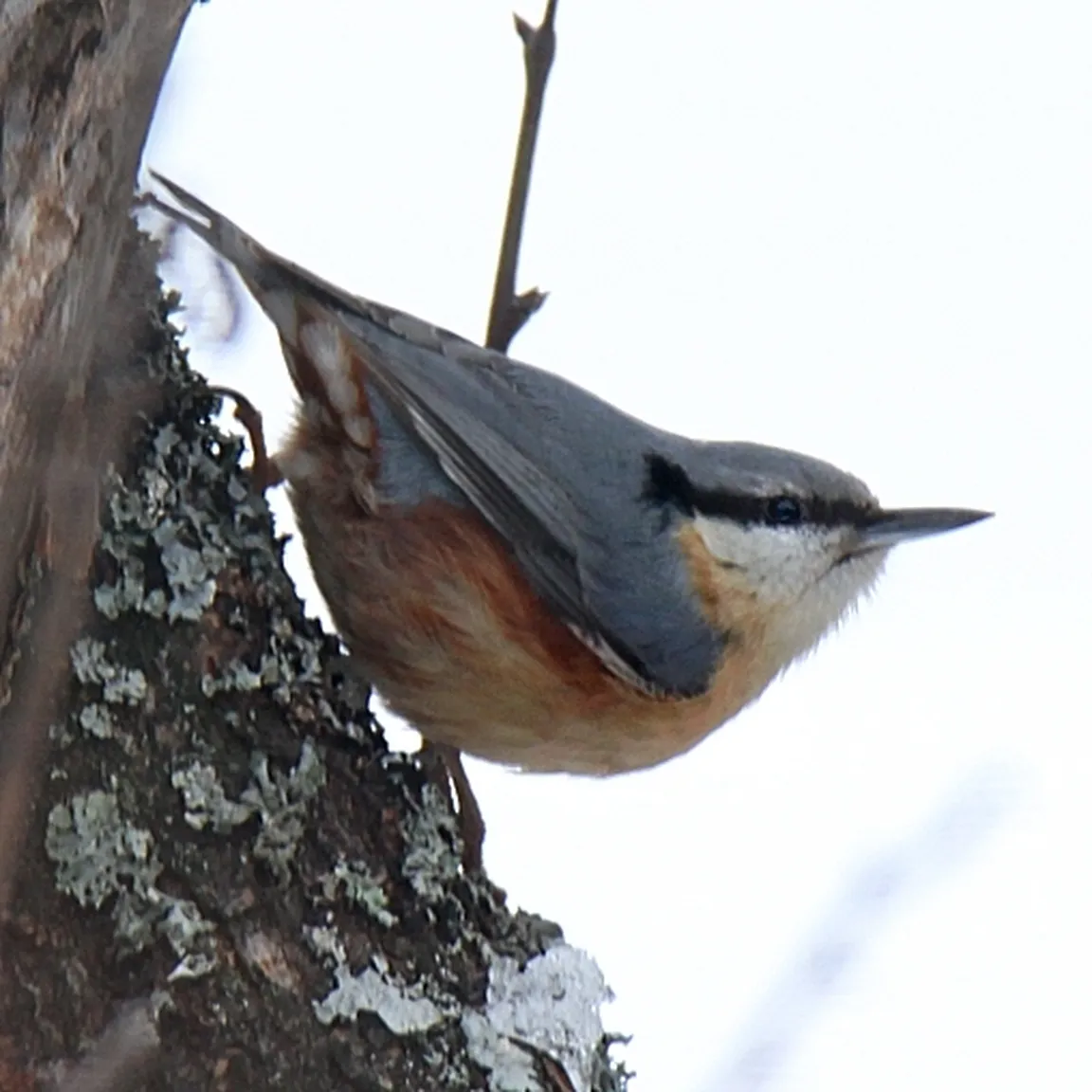The great tit (Sitta europaea) is the only representative of great tits in our country. It is somewhat smaller than a blue tit, but more stocky, with a nicely rounded belly and a short tail. On a short neck it has a large head with a long, hammer-shaped beak. Across the head, nape, shoulders and back it is blue-gray, the wings are ash-gray to dark gray. The tail is light in the middle, on the sides it is dark gray. The great tit's chest, belly, flanks and the part in front of the tail are pinkish-orange. On the sides in front of the tail there are three snow-white patches arranged on a reddish background. From the dark beak a black stripe runs over the white cheeks across the eyes, which at the nape bends downward onto the neck.
The great tit is a lively bird that spends its life on the trunks of trees and on the branches of their canopies. It is an exceptional climber and the only among our birds that can climb even head-down. It does not fear humans, so we can easily observe it as it climbs up and down an oak trunk or branch here and there, without disturbing it in its activity. In the meantime it taps with its beak on the bark and probes the crevices for spiders as well as larvae and adult insects, and in autumn, when the nuts and similar dry fruits ripen, it begins gathering them. Nuts are its main food even throughout the winter, therefore, as a good provider, it stores a stock for times when seeds are abundant.
The great tit nests in April and May in deciduous and mixed forests, in parks and in larger gardens, where it finds an old oak. In our country it is a common and widely distributed year-round species that nests in an abandoned woodpecker hollow, as it cannot excavate it itself. If the entrance to the hollow seems too large, it coats it with mud or clay and thus reduces the opening. It does not require much comfort for nesting, therefore in the hollow it brings only a few flakes of pine bark or a little leaves and lichens.


